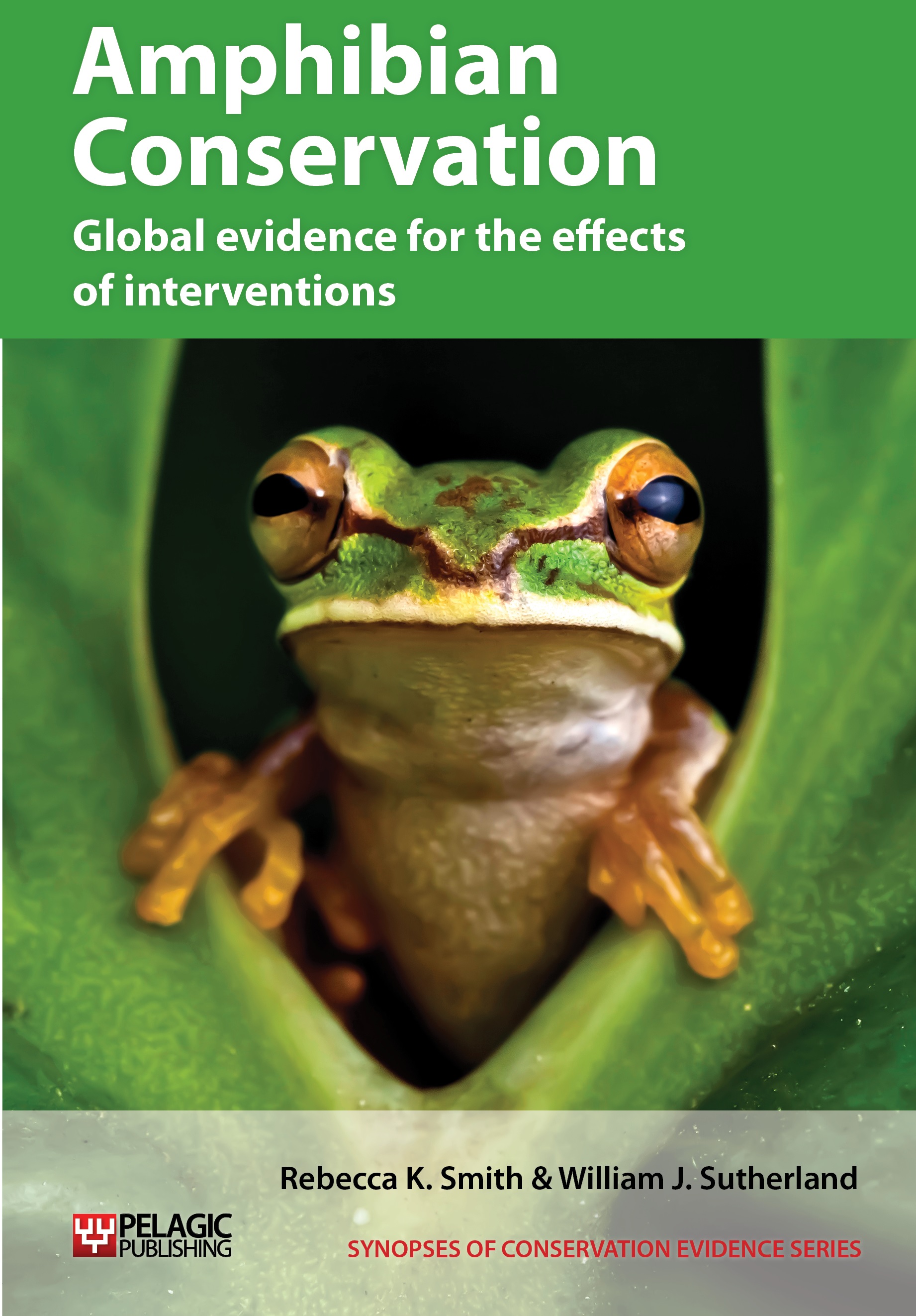Create ponds for natterjack toads
-
Overall effectiveness category Beneficial
-
Number of studies: 6
View assessment score
Hide assessment score
How is the evidence assessed?
-
Effectiveness
75% -
Certainty
70% -
Harms
10%
Study locations
Supporting evidence from individual studies
A replicated, site comparison study in 1982–1984 of created and natural ponds at a dune and heathland site in England, UK (Banks & Beebee 1988) found that artificial ponds had lower natterjack toad Bufo calamita tadpole mortality from desiccation, but higher mortality due to predation by invertebrates compared to natural ponds. Invertebrate predator numbers tended to increase with pond permanence. Artificial ponds had been designed to be deeper than most natural ponds (62–95 vs 9–45 cm). Six artificial scrapes were made in 1980 at the dune site, which had 100 natural freshwater ponds (23–63 monitored/year). At the heathland site, natterjacks used 2–3 natural ponds and three artificial scrapes created in the 1970s. Natterjacks were monitored in April–July, 1982–1984 by counting egg strings, netting and undertaking a mark-recapture study of tadpoles.
Study and other actions testedA before-and-after study in 1972–1991 on heathland in Hampshire, England, UK (Banks, Beebee & Denton 1993) found that pond creation, along with other interventions resulted in a three-fold increase in a natterjack toad Bufo calamita population (see also Buckley & Beebee 2004). Egg string counts (female population) increased from 15 to 43, with a maximum number of 48 in 1989. Ponds tended to be used for breeding within a year of construction. Nine small ponds (< 1,000 m2) were created and four restored by excavation. Scrub, bracken and swamp stonecrop Crassula helmsii were controlled. Captive-reared toadlets raised from eggs were released in 1975 (8,800), 1979, 1980 and 1981 (1000 each). Limestone was added to one naturally acid pond (735 m2) in April 1983–1989. Toads were monitored annually, once every 10 days in March and August.
Study and other actions testedA replicated before-and-after study in 1972–1995 at 26 dune, heathland and salt marsh sites in England, UK (Denton et al. 1997) found that pond creation, along with terrestrial habitat management and translocations, maintained or increased natterjack toad Bufo calamita populations at the majority of sites. At 46% of sites, new ponds were considered by the authors to have prevented extinction. At an additional 19% of sites, populations increased following pond creation. There was no effect of new ponds at 27% of sites. At all 26 sites, at least one and usually most new ponds were used by toads within 1–2 years of creation. Over 200 ponds were created by excavation over 25 years. Some were lined with concrete. Vegetation clearance was undertaken at 10 sites. Low-density sheep/cattle grazing was established at seven sites and a small number of acidic ponds were treated with limestone. Twenty translocations to restored habitat were also undertaken. Ponds were monitored by counting egg strings and estimating toadlet production.
Study and other actions testedA controlled, before-and-after study in 1986–2004 of coastal meadows in Funen County, Denmark (Briggs 2004) found that natterjack toad Bufo calamita populations increased significantly after pond creation and restoration and reintroduction of grazing. On 10 islands, natterjack toads increased from 3,106 in 1998–1990 to 4,892 adults in 1997. Numbers of ponds with successful breeding remained similar (28 to 34). Numbers declined on four islands with no restoration (270 to 170). From 1986 to 1991, eight ponds were created and six restored for natterjacks on 16 islands. Cattle grazing was reintroduced on six and continued on ten islands. Four populations were monitored annually and others less frequently during 2–3 call and visual surveys and dip-netting.
Study and other actions testedA replicated, before-and-after study in 1972–1999 at two sites in England, UK (Buckley & Beebee 2004) found that pond creation and restoration, along with other interventions, increased natterjack toad Bufo calamita populations over 20 years. The continuation of a study in Hampshire, UK in 1972–1991 (Banks, Beebee & Denton 1993) until 1999 indicated that there was a doubling of the population. Spawn string counts (female population) increased from 15 in 1972 to 32 in 1999, with a maximum number of 48 in 1989. At a second site, egg string counts increased from 1 in 1973 to 8 in 1999, with a maximum number of 29 in 1997. Ponds were created and restored by excavation, scrub and bracken was cleared and head-started toadlets were released. Toads were monitored annually.
Study and other actions testedA replicated, before-and-after, site comparison study in 1985–2006 of 20 dune, heathland and salt marsh sites in the UK (McGrath & Lorenzen 2010) found that natterjack toad Bufo calamita populations tended to increase or be maintained with species specific habitat management including pond creation. In contrast, long-term trends showed population declines at unmanaged sites. Individual types of habitat management (aquatic, terrestrial or common toad Bufo bufo management) did not significantly affect trends, but duration of management did. Overall, five of the 20 sites showed positive population trends, five showed negative trends and 10 trends were not significantly different from zero. Data on populations (egg string counts) and management activities over 11–21 years were obtained from the Natterjack Toad Site Register. Habitat management for toads was undertaken at seven sites. Management varied between sites, but included pond creation, adding lime to acidic ponds, maintaining water levels, vegetation clearance and implementing grazing. Translocations were also undertaken at seven of the 20 sites using wild-sourced (including head-starting) or captive-bred toads.
Study and other actions tested
Where has this evidence come from?
List of journals searched by synopsis
All the journals searched for all synopses
This Action forms part of the Action Synopsis:
Amphibian Conservation
Amphibian Conservation - Published 2014
Amphibian Synopsis





)_2023.JPG)














